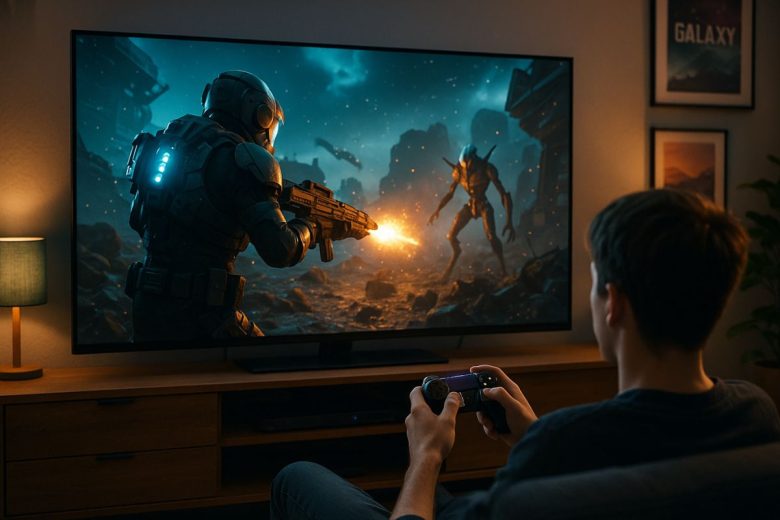When Defiance launched in 2013, it was doing something bold. It wasn’t just a TV show. It wasn’t just a video game. It was both—built to work together in real time. The idea was simple on paper but incredibly ambitious: tell one story across two platforms, letting players and viewers shape what happens next.
The show aired on Syfy. The game launched on PC, Xbox 360, and PlayStation 3. And both shared the same world, the same lore, and even some of the same characters. This wasn’t a side project or a marketing stunt. It was a full attempt to merge storytelling between screens, with each piece feeding into the other.
What Made Defiance Stand Out in TV and Gaming
Defiance wasn’t just a cool idea—it was a huge risk. Here’s what this post will cover:
How the show and game were designed to share a timeline
What worked and what didn’t in connecting live television with a live MMO
The legacy of Defiance for transmedia storytelling today
Most games based on shows come long after the story ends. Most shows inspired by games only borrow the title. Defiance tried to be something more connected, and that effort still matters.
The World of Defiance
Set in a near-future Earth reshaped by alien technology and war, Defiance created a world full of shifting alliances, dangerous creatures, and hidden agendas. The show focused on a small town—also called Defiance—built on the ruins of St. Louis. The game followed Ark Hunters, scavengers digging through alien debris for valuable tech.
Both were set in the same timeline. Events from the show could ripple into the game. Characters from the series could appear as mission-givers. And updates to the game tied back into what was airing that week. It was all part of an effort to make fans feel like they were part of something bigger.
How the Game Worked Alongside the Show
The Defiance game was a third-person shooter MMO. Players created their own characters, completed quests, and explored the San Francisco Bay Area—another part of the world affected by the same war and alien presence. While the show followed scripted drama, the game leaned on player agency and open-world exploration.
Every time the show introduced a new character or major plot point, the game would react. For example, when a major alien species became more important in the show, players would suddenly see that species appear in game missions. Sometimes, new voice lines or cutscenes would go live to match what just aired.
This gave players a sense that the world was alive—and that the story was unfolding with them, not ahead of them. No one had done that before on this scale.
Challenges in Syncing Two Worlds
Of course, merging two massive projects isn’t easy. The TV show had its own schedule, production demands, and creative decisions. The game had its own development cycles, bugs to fix, and player expectations. Keeping them in sync took constant coordination.
Not everything worked perfectly. Some updates to the game didn’t line up as closely with the show as fans hoped. Sometimes the connections felt surface-level, more like nods than real consequences. And the show eventually followed its own arc without leaning as much on the game.
But even when things got out of step, the idea behind it remained strong. Players still saw moments where their world and the TV version overlapped. And even when one part struggled, the other could keep going.
A Community That Crossed Platforms
One of the best things about Defiance was its community. Fans of the show checked out the game to dive deeper into the story. Gamers who got hooked on the action would tune in each week to see what was happening in Defiance, the town.
It created crossover that felt rare. People posted theories, shared clips, and compared plot points between the two versions of the story. When a character from the show popped up in the game, it felt like an Easter egg with real weight. When the game introduced new tech or lore, fans looked for hints about how it might show up in the next episode.
For a brief window of time, it felt like everyone was watching and playing the same story unfold.
What the Show Brought to the Table
The Defiance TV show had strong characters, solid world-building, and a setting that felt just strange enough to stand out. It mixed alien politics with frontier-town drama. There were love stories, power struggles, and moments of big action. And at its best, it offered sci-fi with heart.
The show didn’t rely on viewers knowing the game. It stood on its own. But for those who played, there was always an extra layer. Seeing Nolan and Irisa, two main characters, pop up in both formats gave a sense of unity that few transmedia projects ever pulled off.
Even for those who never touched the game, the series offered a look into a detailed, messy, lived-in future that balanced grit with hope.
Why It Still Matters
Defiance wasn’t perfect. The game had technical issues. The show sometimes struggled with tone. But what made it special was how hard it tried to connect fans across formats. It asked more of its audience and offered more in return.
Most companies talk about transmedia like it’s easy. But Defiance actually did it. It showed what happens when developers and showrunners sit at the same table. And while the game servers shut down in 2021 and the show ended after three seasons, the idea behind it still inspires creators today.
Defiance walked a difficult line, trying to bring two audiences together in a shared universe. It took a swing at something that most studios wouldn’t even attempt. And for a while, it worked.
For fans of both mediums, Defiance offered something rare: a chance to watch a world grow and then jump in to live it.
